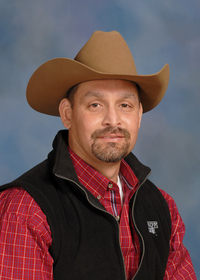Strategies for Better Management of Pasture Fertilization
Increasing fertilizer prices and the need for strategies that will maintain productivity are major issues for livestock producers throughout the state. Fertilizing pastures is different from fertilizing hay because most of the nutrients are recycled in a pasture system. Pasture fertilization should be controlled based on the producer’s goals. A fertility program should address the following questions:
- How much forage is needed for the animals?
- What time of year is the forage needed most?
- What species are present?
- What are my management strategies?
Answering these questions will allow a producer to increase fertilizer efficiency and reduce costs.
Soil Testing
Fertilizer is one of the major annual costs of maintaining an established pasture. Soil testing is one of the best tools for understanding pasture fertilization, and recommendations are tailored to the type of forage being grown.
Despite this, less than 10 percent of the pastures in Mississippi are soil tested. Nitrogen, phosphorous, potassium, and lime cost forage producers money. To avoid this expense, many producers do not test soil or fertilize their soils regularly. With today’s fertilizer prices, soil testing should be considered a necessity, not a luxury. Pasture land should be soil tested every 2 to 3 years. You should know what soil pH is ideal for the type of forage species present before you apply any nutrients. Soil pH has a major effect on nutrient availability (Figure 1) and nutrient uptake (Table 1).
| Soil pH
|
Nitrogen
|
Phosphorous
|
Potassium
|
|---|---|---|---|
|
4.5 |
21% |
8% |
21% |
|
5.0 |
38% |
10% |
30% |
|
5.5 |
52% |
15% |
45% |
|
6.0 |
63% |
15% |
60% |
|
7.0 |
70% |
30% |
60% |
Source: Tony Provin, Soil Chemist, Texas A&M University.
Timing of Fertilization
The time of the year and the time during the growing season that fertilizer is applied can affect the amount of growth that occurs. To increase forage production, fertilizer has been traditionally applied in the spring, but spring application may or may not be best for your situation. Consider how much livestock is present and how much forage those animals can eat before forage quality declines. To make the most of your time and money, ask yourself this question: How can fertilizer applications help us use forage more efficiently? Apply fertilizer in the spring only if the soil test recommends it and increased forage production is needed to sustain livestock production.
One money-saving strategy is to fertilize only those areas that have had high productivity throughout the years. In periods of limited soil moisture, delaying fertilizer application until moisture is present or imminent can also increase efficiency. Forage plants only use 35 to 40 percent of nutrients provided through fertilization, which means that split applications might be more beneficial and subsequent applications are made only if needed. Need to jump-start a pasture for early grazing? Consider using 30-40 lbs. of nitrogen on a third of your pastures so the extra early grass will let you get cattle off hay a couple of weeks earlier.
Alternative Fertilizer Options
Poultry Litter
Producers have expressed great interest in using poultry litter. Not all of the nutrients in poultry litter are immediately available for plants to use. Most of the nitrogen in poultry litter is in an organic form (about 89 percent), but poultry litter also contains ammonium (about 9 percent) and a small amount of nitrate (about 2 percent). Plants can use the inorganic nitrogen (ammonium and nitrate) immediately. Organic nitrogen is not available to plants until microorganisms in the soil convert it to ammonium or nitrate. Because this is a biological process, the rate of conversion depends on soil moisture and temperature. The conversion takes place over time with the largest release of nitrogen shortly after application if the soil is moist and warmer than 50 °F. One advantage of poultry litter for pastures is that the slow conversion of organic to inorganic nitrogen distributes available nitrogen more evenly over the growing season.
Legumes
Using forage legumes becomes more attractive as the expense of nitrogen (N) fertilizer increases. Legumes usually require more soil amendments for pH, phosphorus, and potassium than grasses do, but the increase in cost for all these combined is still usually lower than the cost of nitrogen fertilizer. Another reason to use clovers and other legumes is that they reduce the need for nitrogen fertilizers, improve seasonal distribution of forage dry matter by boosting summer production, and improve forage quality by increasing protein levels and overall digestibility.
Nitrogen moves from the legumes to the soil through grazing livestock and legume decomposition. Pastures that contain at least 30 to 40 percent legumes often do not require commercial nitrogen fertilizer because most legumes can provide enough N to sustain productivity (Table 2). The amount of N legumes fix varies based on species, soil conditions, water availability, and other seasonal factors (Table 3). Nitrogen rates in a pasture with 30 to 40 percent legume composition can range from as little as 20 pounds of nitrogen per acre per year to more than 250 pounds of nitrogen per acre per year. With N at 0.651 cents per pound, this would be equivalent to $13 to $163 per acre.
| Forage crop
|
N Fixed
(lb/ac/yr) |
45¢/lb
|
55¢/lb
|
65¢/lb
|
|---|---|---|---|---|
|
Alfalfa |
150 - 250 |
68 - 113 |
83 - 138 |
98 - 163 |
|
Arrowleaf clover |
50 - 110 |
23 - 50 |
28 -61 |
33 - 72 |
|
Crimson clover |
70 - 120 |
32 - 54 |
39 - 66 |
46 - 78 |
|
Red clover |
75 - 200 |
32 - 90 |
41 - 110 |
49 - 130 |
|
Sweet clover |
80 - 110 |
36 - 50 |
44 - 61 |
52 - 72 |
|
White clover |
75 - 150 |
34 - 68 |
41 - 83 |
49 - 98 |
|
Vetch, Lespedeza, and other annual forage legumes |
50 - 150 |
23 - 68 |
28 - 83 |
33 - 98 |
Source: Lacefield, 2002; Killpack and Buchholz, 1993.
Table 3. Compatibility of legumes and grasses for forage production.
- Legume: Perennial peanut
- Bahiagrass or bermudagrass
- Small grain or annual ryegrass
- Legume: Alfalfa
- Tall fescue or orchard grass
- Legume: Red clover
- Dallisgrass
- Sohnsongrass
- Tall fescue or orchard grass
- Small grain or annual ryegrass
- Legume: White/ladino clover
- Bahiagrass or bermudagrass
- Dallisgrass
- Tall fescue or orchard grass
- Legume: Arrowleaf clover*
- Bahiagrass or bermudagrass
- Small grain or annual ryegrass
- Legume: Berseem clover*
- Bahiagrass or bermudagrass
- Dallisgrass
- Sohnsongrass
- Small grain or annual ryegrass
- Legume: Crimson clover*
- Bahiagrass or bermudagrass
- Small grain or annual ryegrass
- Legume: Hairy vetch*
- Bahiagrass or bermudagrass
- Small grain or annual ryegrass
- Legume: Rose clover*
- Bahiagrass or bermudagrass
- Small grain or annual ryegrass
- Legume: Subterranean clover*
- Bahiagrass or bermudagrass
- Small grain or annual ryegrass
- Legume: Caley pea*
- Dallisgrass
- Sohnsongrass
*Annual legumes such as arrowleaf clover, crimson clover, subterranean clover, and hairy vetch may be grown with tall fescue, but they are less desirable than perennial clovers.
Source: Ball et al., 2002
Costs for Nitrogen Fertilization Vs. Interseeding Legumes
Based on a cost of $0.651 per pound of nitrogen ($443 per ton for ammonium nitrate), the cost per acre for applying 50, 100, and 150 pounds of nitrogen per acre would be $32.55, $65.10, and $97.65 per acre, respectively. The costs for interseeding legumes into the grazed pasture are less than the costs of applying nitrogen fertilizers. Red clover and white clover are the legumes most often interseeded in Mississippi pastures.
Let’s use red clover in the following example. The cost for a custom no-till drill is $20 per acre. The average cost for red clover seed over the past 2 years is $3.60 per acre at a seeding rate of 3 pounds per acre. The total costs are $23.60 per acre. Table 4 compares the costs of applying nitrogen fertilizer versus interseeding red clover. It is more important than ever to get legumes in your pastures. A good legume stand can provide about $75 worth of nitrogen fertilizer at today’s prices.
|
N rate (lb/ac) |
Difference in Cost per Acre for Interseeding Legumes ($) |
|---|---|
|
50 |
-8.95 |
|
100 |
-41.50 |
|
150 |
-74.05 |
Grazing Management and Nutrient Cycling
Rotational grazing creates high stocking rates in small areas, which usually helps distribute nutrients in pastures. Continuous grazing at low stocking rates encourages concentrations of animal waste around the water source and under shade trees. When livestock consumes the available forage, 80 to 90 percent of the nitrogen in that forage passes through the animal and is excreted in the urine and feces (Figure 2 and Table 5). About half of the nitrogen in the urine is lost through volatilization. A rotational grazing management practice that leaves more of the soil covered with either dead litter or green plant material that is at least 3 to 4 inches tall keeps the soil cooler, increases the urine absorption rate, and reduces ammonia loss. If you intensively manage pastures rather than continuously graze them, you can reduce recommended nitrogen rates by 20 percent for the same yield goal. Some studies have suggested that in a rotational grazing system as much as 50 percent of the pasture surface area may be affected by urine in a single year. In a continuous grazing system, about 2 to 5 percent of the pasture may be affected by cattle urine in a single grazing season.
The type of grazing system also affects the effective N application rate from cattle urine. In a continuous grazing system, the effective N application is less than 1 pound of N per acre per year. In a rotational system, it is about 30 to 50 pound of N per acre per year. A twice-weekly rotation could contribute approximately 20 pounds per acre per week of readily available urinary N to the pasture.
Summary
Fertilizing with nitrogen is a short-term management tool because its effect is usually immediate and lasts only one grazing cycle. On the other hand, legume establishments are long-term investments that improve soil and water quality as well as productivity. Additions of N fertilizer may cause a shift to more grass content in the year of application, and under poor management, fertilization increases weed competition. It is important to fertilize wisely and only the pastures most likely to be grazed at the start of the season. With the high cost of N, use it as a specific management tool, not a blanket treatment.
Literature Cited
Caddel, J., D. Redfearn, H Zhang, J. Edwards, and S. Deng. Forage Legumes and Nitrogen Production. Oklahoma State Univ. Coop. Ext. Serv. Pub. PSS-2590.
Ball, D.M., C.S. Hoveland, and G.D. Lacefield. 2002. Southern Forages. 3rd Ed. Phosphate & Potash Institute and Foundation for Agronomic Research. Nacross, GA.
Beetz, A.E. 2002. A Brief Overview of Nutrient Cycling in Pastures. Appropriate Technology Transfer for Rural Areas (ATTRA). November. On line: http://www.attra.ncat.org (April 2, 2008).
Davis, J.G., and A.M. Swinker. 2002. Horse Manure Management. Colorado State Univ. Coop. Ext. Serv. Pub. 1.219.
Killpack, S.C. and D. Buchholz. 1993. Nitrogen in the Environment: Nitrogen Replacement Value of Legumes. Univ. of Missouri Coop. Ext. Serv. Pub. WQ-277.
Lacefield, G., J. Henning, R. Burris, C. Dougherty, and C. Absher. 2002. Grazing Alfafa. Univ. of Kentucky Coop. Ext. Serv. Pub. ID-97.
Gerald W. Evers, G.W. Why We Need Forage Legumes. Texas AgriLife Ext. Serv. Online: http://overton.tamu.edu/clover/cool/need.htm (April 2, 2008).
Publication 2497 (POD-09-19)
By Rocky Lemus, PhD, Extension/Research Professor, Plant and Soil Sciences.
Copyright 2019 by Mississippi State University. All rights reserved. This publication may be copied and distributed without alteration for nonprofit educational purposes provided that credit is given to the Mississippi State University Extension Service.
Produced by Agricultural Communications.
Mississippi State University is an equal opportunity institution. Discrimination in university employment, programs, or activities based on race, color, ethnicity, sex, pregnancy, religion, national origin, disability, age, sexual orientation, genetic information, status as a U.S. veteran, or any other status protected by applicable law is prohibited. Questions about equal opportunity programs or compliance should be directed to the Office of Compliance and Integrity, 56 Morgan Avenue, P.O. 6044, Mississippi State, MS 39762, (662) 325-5839.
Extension Service of Mississippi State University, cooperating with U.S. Department of Agriculture. Published in furtherance of Acts of Congress, May 8 and June 30, 1914. GARY B. JACKSON, Director
The Mississippi State University Extension Service is working to ensure all web content is accessible to all users. If you need assistance accessing any of our content, please email the webteam or call 662-325-2262.




